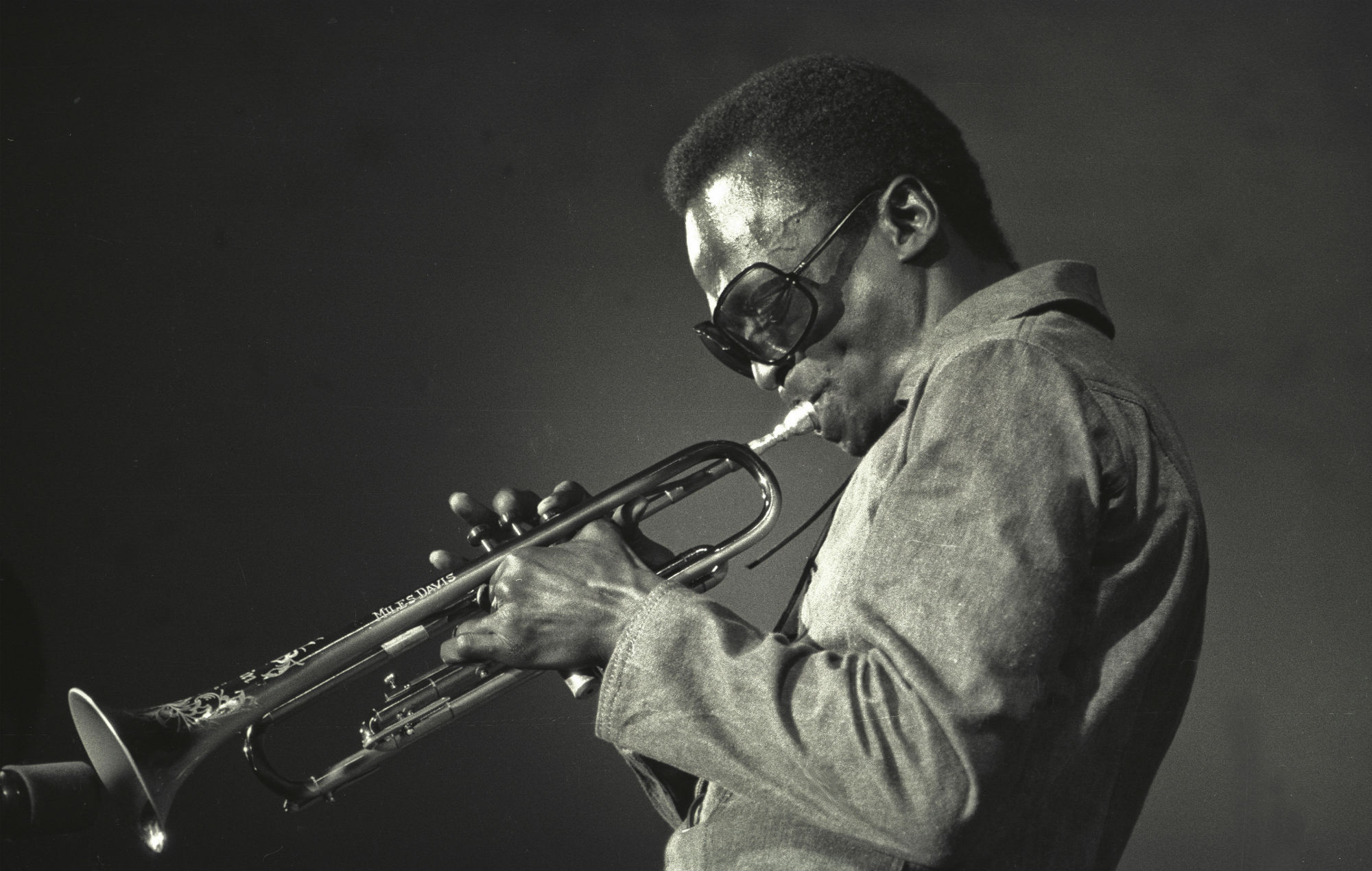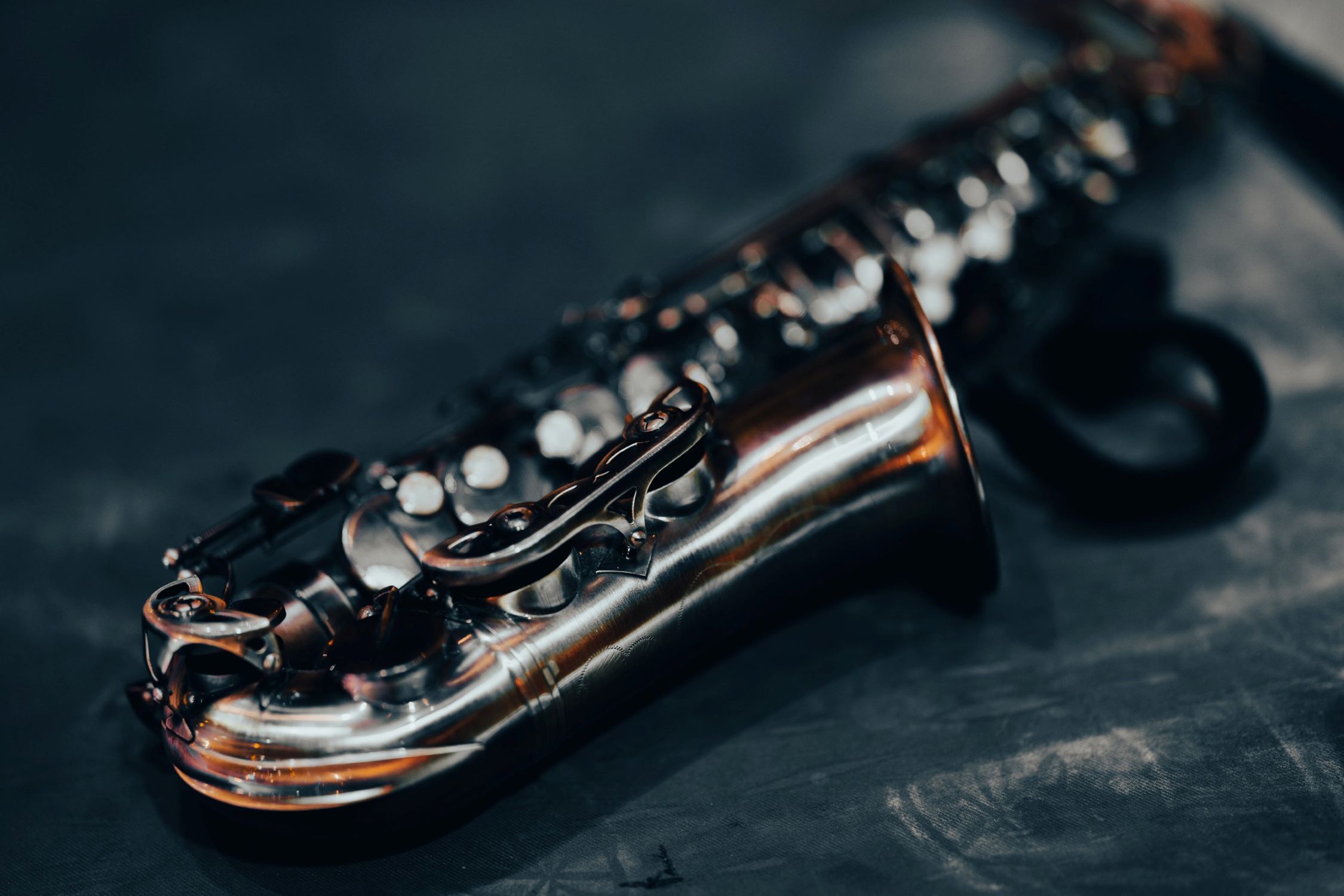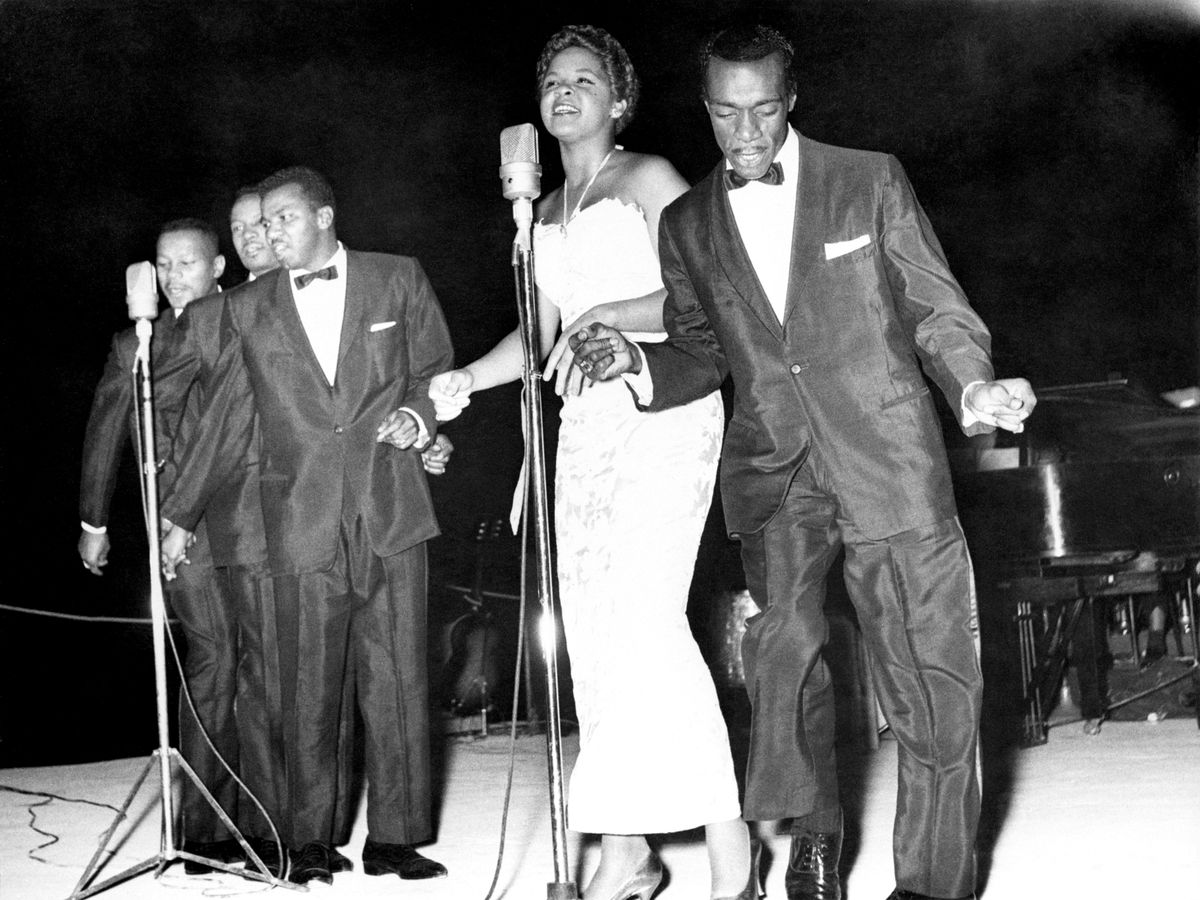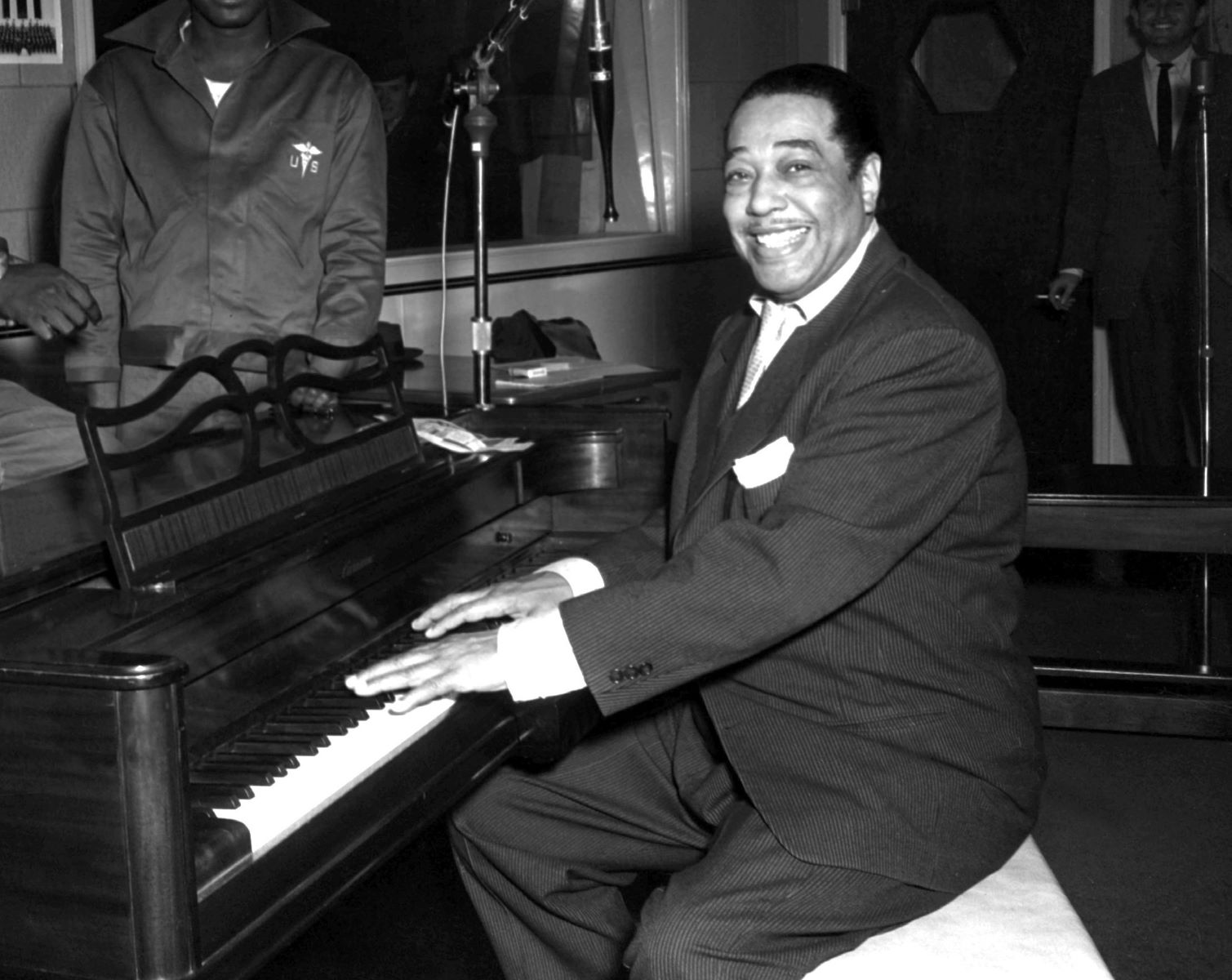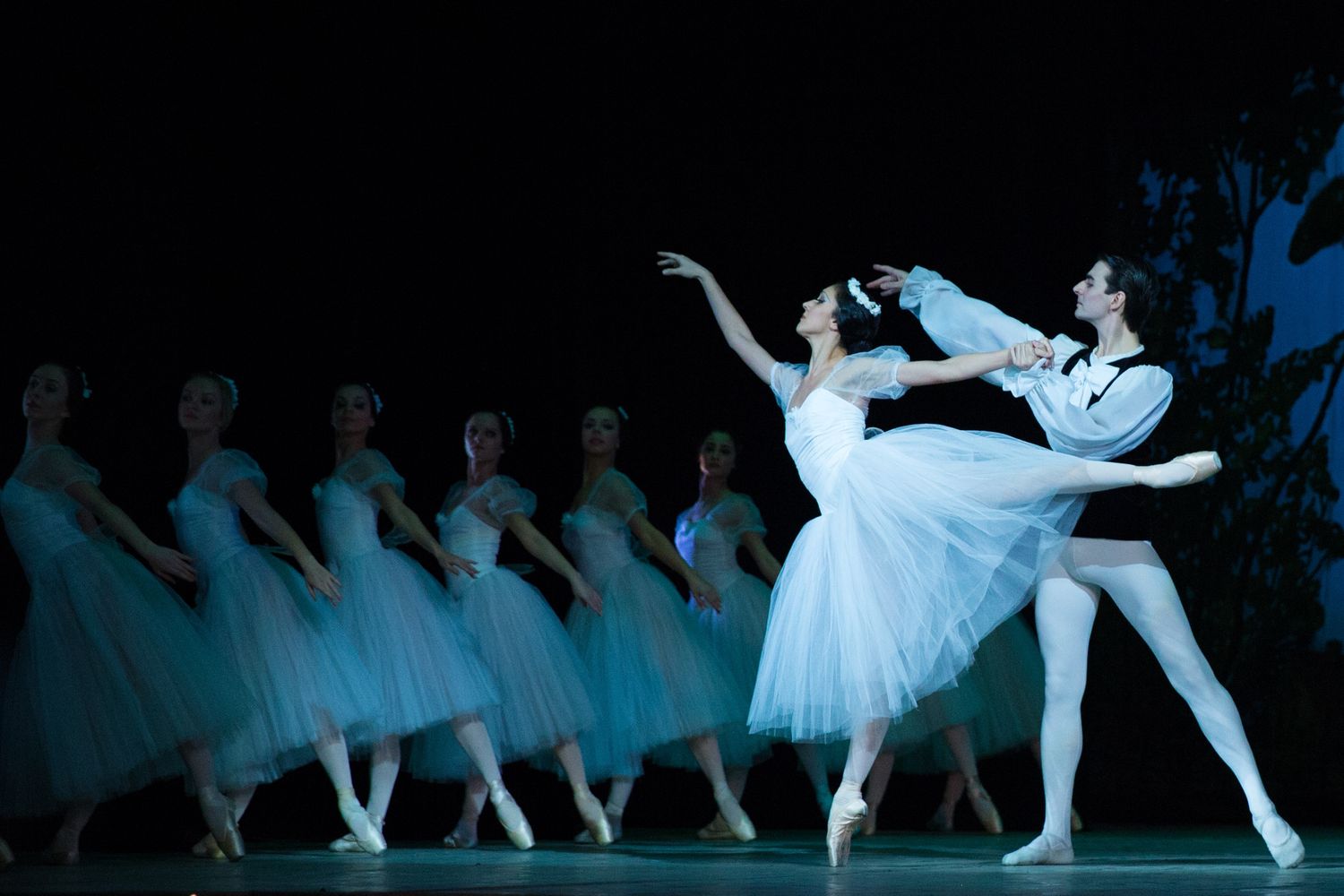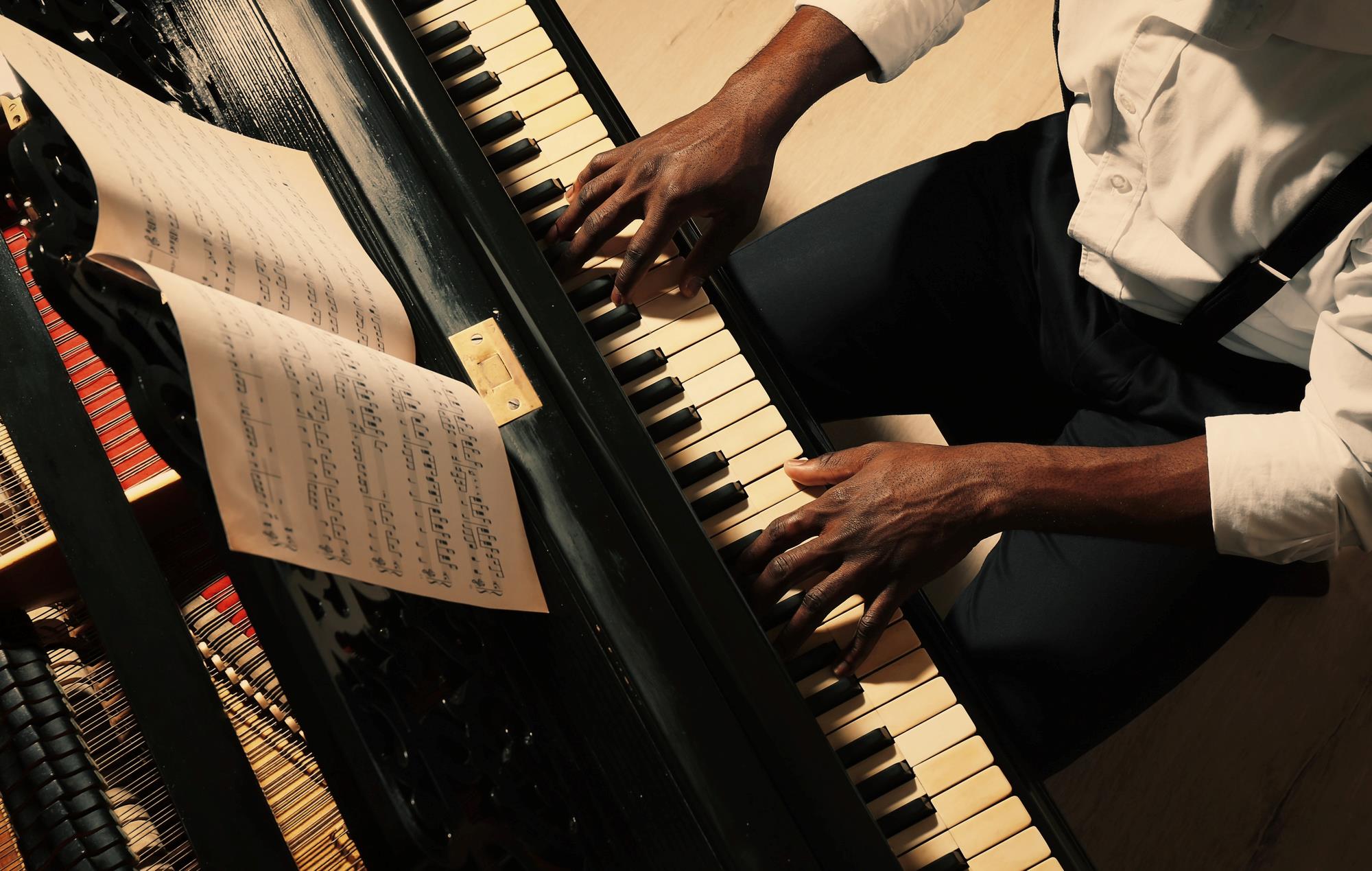

Jazz
How Popular Was Jazz In The 1920s
Modified: February 18, 2024
Discover the widespread popularity of Jazz in the vibrant 1920s. Explore the origins, influence, and cultural impact of this iconic musical genre.
(Many of the links in this article redirect to a specific reviewed product. Your purchase of these products through affiliate links helps to generate commission for AudioLover.com, at no extra cost. Learn more)
Table of Contents
Introduction
Jazz, a uniquely American art form, emerged in the early 20th century and quickly gained popularity. Rooted in African-American communities, jazz music spread its infectious rhythms and melodies across the nation, becoming the soundtrack of the Roaring Twenties. The 1920s, often referred to as the Jazz Age, was a time of cultural revolution, social change, and artistic innovation. Jazz not only transformed the music scene but also had a profound impact on society as a whole.
With its improvisational nature, syncopated rhythms, and energetic performances, jazz captured the imagination of millions and became synonymous with the spirit of rebellion and liberation. This uniquely American genre found its home in the speakeasies and nightclubs of the Prohibition era, where it provided an escape from the restrictive social norms.
The 1920s also witnessed the rise of the Harlem Renaissance, a cultural movement that celebrated African-American art, literature, and music. Jazz, with its roots in African-American traditions, played a significant role in shaping the cultural landscape of this era. It became a symbol of Black creativity and expression, highlighting the struggles and triumphs of the African-American community.
As jazz gained popularity, it began to transcend racial and social boundaries, appealing to a diverse audience. This period witnessed a significant shift in the perception of music, as jazz moved beyond the confines of its origins and entered the mainstream. It became the soundtrack of the era, reflecting the vibrant and dynamic spirit of the 1920s.
In this article, we will explore the enduring legacy of jazz in the 1920s, tracing its origins, its impact on society and culture, and its journey from the underground clubs to mainstream recognition. Join us as we dive into the fascinating world of jazz music in the Jazz Age, exploring the key moments, influential figures, and societal changes that shaped this revolutionary genre.
Origins of Jazz
Jazz has its roots in the African-American communities of New Orleans, Louisiana, in the late 19th and early 20th centuries. It emerged as a fusion of African and European musical traditions, blending elements of ragtime, blues, spirituals, and traditional African rhythms.
The musical heritage of enslaved Africans and their descendants played a significant role in shaping the sound and style of jazz. From their African roots, they brought polyrhythmic beats, call-and-response patterns, and improvisation. These musical techniques were combined with the European musical traditions, which introduced instruments such as the trumpet, saxophone, piano, and drums.
The birthplace of jazz, New Orleans, was a melting pot of cultures, with a diverse mix of African, French, Spanish, and Caribbean influences. The city’s vibrant music scene provided the perfect breeding ground for the development of this new musical genre.
At the turn of the 20th century, New Orleans was home to African-American parade bands, known as brass bands, which played a pivotal role in the evolution of jazz. These bands played a diverse repertoire that encompassed military marches, popular music of the time, and the emerging sound of ragtime.
Ragtime, characterized by its syncopated rhythms and lively melodies, was a precursor to jazz. Musicians started incorporating improvisation into their performances, deviating from the written sheet music. This improvisational element, coupled with the infectious rhythms of ragtime, laid the foundation for what would become jazz.
One of the key figures in the early development of jazz was trumpeter Buddy Bolden. Known for his powerful playing style and improvisational skills, Bolden was instrumental in popularizing the new genre. Unfortunately, no known recordings of Bolden exist, but his influence on subsequent generations of musicians is undeniable.
Another influential figure in the evolution of jazz was pianist and composer Jelly Roll Morton. Morton is often credited with being one of the first to notate jazz compositions and arrangement, contributing to the formalization of the genre. His recordings from the 1920s provide valuable insights into the early styles and structures of jazz.
As jazz continued to evolve and gain popularity in New Orleans, it eventually spread to other cities, including Chicago, New York City, and Kansas City. Each city added its own unique flavor to the genre, contributing to its diverse and ever-evolving nature.
The origins of jazz lay in the rich cultural tapestry of African-American communities, the merging of musical traditions, and the spirit of creativity and improvisation. This unique amalgamation set the stage for the Jazz Age of the 1920s, when jazz would take the world by storm.
The Jazz Age
The 1920s, often referred to as the Jazz Age, was a period of immense cultural and social change in America. It was a decade marked by economic prosperity, technological advancements, and a spirit of rebellion against traditional norms. At the heart of this transformative era was the music that defined it: jazz.
The term “Jazz Age” was coined by writer F. Scott Fitzgerald, who captured the essence of the era in his classic novel, “The Great Gatsby.” Fitzgerald described the 1920s as a time of excess, indulgence, and a newfound sense of freedom. Jazz music was the soundtrack of this vibrant and exhilarating age.
Jazz became the symbol of a new generation, challenging the established social order with its energetic rhythms and unconventional melodies. It represented the spirit of youth and rebellion, as the younger generation embraced this vibrant form of expression.
One of the driving forces behind the popularity of jazz was the advent of the phonograph and recorded music. This allowed for the widespread dissemination of jazz recordings, making it accessible to a larger audience. The sounds of jazz could now be heard in homes across America, transcending geographical boundaries.
With jazz as its rallying cry, the younger generation of the 1920s rejected the restraints of the Victorian era and embraced a more liberated lifestyle. The flapper culture emerged, as young women defied social conventions by bobbing their hair, wearing shorter skirts, and openly participating in the nightlife.
Nightclubs and dance halls became the epicenter of the Jazz Age, where people would gather to listen to live jazz performances and participate in exuberant dances like the Charleston and the Lindy Hop. These venues provided a space for socializing, self-expression, and inclusivity, as people from different backgrounds came together to enjoy the music.
Icons of the Jazz Age, such as Louis Armstrong, Duke Ellington, and Bessie Smith, shaped the sound and style of the era. Their influential recordings and electrifying live performances captivated audiences and solidified jazz as a significant force in popular culture.
The Jazz Age was also a time of significant racial tensions and segregation in America. African-American musicians faced discrimination and were often confined to playing in segregated venues. Despite these challenges, jazz music served as a powerful vehicle for cultural expression and social commentary, highlighting the resilience and creativity of the African-American community.
The Jazz Age came to an abrupt end with the onset of the Great Depression in the late 1920s. The economic downturn led to a decline in the popularity of jazz and a shift towards more somber and introspective musical styles.
However, the legacy of the Jazz Age lives on. Jazz continues to be celebrated as one of America’s greatest contributions to the world of music, and its impact on popular music genres and cultural movements remains profound.
Join us as we delve deeper into the fascinating world of jazz in the 1920s, exploring its role in the Prohibition era, the Harlem Renaissance, and the social changes that defined the Jazz Age.
Jazz in the Roaring Twenties
The Roaring Twenties, a term coined to describe the decade following World War I, was a time of unprecedented social, cultural, and economic dynamism in the United States. Central to this transformative era was the growing popularity of jazz, which became symbolic of the spirit of the times.
Jazz music in the 1920s was characterized by its upbeat tempo, syncopated rhythms, and improvisation. It reflected the energy, optimism, and hedonism that permeated the Roaring Twenties. Jazz was the soundtrack of the decade, setting the stage for a new era of cultural expression and social change.
The proliferation of jazz can be attributed to several factors. The first was the widespread availability of phonographs and radios, allowing for the mass dissemination of jazz recordings and live broadcasts. This enabled people from all walks of life to experience and appreciate the vibrant sounds of jazz.
Additionally, the Prohibition era, which lasted from 1920 to 1933, played a significant role in the rise of jazz. As the consumption and sale of alcohol were prohibited, illegal underground establishments known as speakeasies became popular gathering places for socializing and entertainment. Jazz musicians, often hired to perform in these hidden establishments, flourished in this illicit environment.
The speakeasies provided a platform for jazz musicians to showcase their talents and experiment with new styles and techniques. Their energetic performances and improvisational skills captivated audiences, creating an intimate and electrifying atmosphere.
Key figures of the jazz scene in the 1920s included Louis Armstrong, known for his virtuosic trumpet playing and charismatic stage presence, as well as the innovative pianist and composer, Duke Ellington. These musicians, along with countless others, helped define and popularize the sounds of jazz during this vibrant decade.
Jazz musicians from New Orleans, such as Jelly Roll Morton and King Oliver, migrated to Chicago and New York City, bringing their unique styles and contributing to the growth of jazz in these urban centers. Cities like Chicago became hotbeds of jazz music, with numerous clubs and venues showcasing both local talent and national acts.
The popularity of jazz was not limited to African-American communities. White musicians and audiences alike embraced this new form of music, leading to a mixing of cultural influences and a blurring of racial boundaries in the jazz scene.
Jazz in the Roaring Twenties not only influenced the music industry but also had a profound impact on dance styles. The Charleston, with its fast-paced footwork and energetic movements, became synonymous with the era. Jazz music provided the perfect rhythm for these lively dances, adding to the exhilaration and sense of liberation that defined the decade.
As the decade came to a close, the Great Depression hit, leading to economic hardship and a decline in the popularity of jazz. However, the music had left an indelible mark on American culture and continued to evolve and influence future musical genres.
The Roaring Twenties was a golden era for jazz, catapulting the genre to the forefront of popular music and transforming it into an emblem of the modern age. The energy, innovation, and sheer joy of the jazz music of this era continue to captivate audiences and serve as a testament to the cultural significance of the Roaring Twenties.
Jazz Music and Prohibition
Prohibition, declared in 1920 and lasting until 1933, was a period in American history when the production, sale, and distribution of alcoholic beverages were banned. However, this era of strict government control and prohibition gave rise to a flourishing underground culture, where jazz music thrived.
In the midst of the Prohibition era, illegal speakeasies emerged as hidden establishments where people gathered to drink, socialize, and be entertained. These venues became sanctuaries for jazz musicians, providing them a platform to perform and experiment with the vibrant sounds of their music.
Speakeasies were often packed with patrons seeking refuge from the restrictions of the time. Jazz, with its lively rhythms and infectious energy, offered an escape from the harsh realities of Prohibition. The music provided a backdrop to the secret world of drinking and revelry happening in these underground venues.
Jazz musicians, known for their improvisational skills and ability to create on the spot, were particularly well-suited for the atmosphere of the speakeasies. Their energetic performances and syncopated rhythms perfectly complemented the lively ambiance of these hidden establishments.
Many jazz musicians, both African-American and white, found steady employment in speakeasies, entertaining patrons and keeping the illicit venues alive. Notable figures such as Louis Armstrong, Bessie Smith, and Duke Ellington honed their skills and gained popularity by performing in these establishments.
As jazz flourished in the speakeasies, it began to permeate popular culture outside of the hidden world of Prohibition. Recordings of jazz music reached a wider audience, and jazz orchestras brought the sounds of the speakeasies to dance halls and theaters.
Jazz also played a significant role in connecting different racial and cultural communities during Prohibition. The speakeasies became social melting pots, where people from diverse backgrounds came together to enjoy the music. Jazz bridged racial divides, uniting audiences through a shared appreciation for the art form.
While the speakeasies provided an outlet for jazz musicians, they also faced the risk of raids and arrests by law enforcement. The police cracked down on these illegal establishments in an attempt to enforce Prohibition laws. However, the allure of jazz and the demand for entertainment kept the speakeasies thriving, albeit with a constant air of secrecy and danger.
The symbiotic relationship between jazz and Prohibition highlighted the resilience and creativity of the human spirit during times of restriction. Jazz music, born from the struggles and hardships of African-American communities, found a home in the rebellious underground culture of the Prohibition era.
Though Prohibition came to an end in 1933, jazz continued to evolve and leave an indelible mark on American music and culture. Its rich history during the Prohibition era remains a testament to the enduring power of jazz and its ability to connect people through the universal language of music.
The Harlem Renaissance and Jazz
The Harlem Renaissance, a cultural and intellectual movement that took place in the 1920s, was a period of significant artistic and literary achievements within the African-American community. It was during this time that jazz music played a pivotal role, serving as a catalyst for social and cultural change.
Harlem, a neighborhood in New York City, became the cultural epicenter of the Harlem Renaissance. It drew together a diverse group of African-American artists, writers, musicians, and intellectuals, who sought to celebrate and reclaim their cultural heritage.
Jazz, with its roots deeply embedded in African-American traditions, became the heartbeat of the Harlem Renaissance. The genre thrived in the vibrant music scene of Harlem, with clubs and venues showcasing the talents of jazz musicians.
Notable figures such as Duke Ellington, Count Basie, and Louis Armstrong rose to prominence during this time, using their music to assert their identity and break down racial barriers. Jazz became a potent symbol of African-American pride and creativity, challenging societal inequalities and discrimination.
The Harlem Renaissance allowed jazz musicians to find their voice and express the complex emotions and experiences of the African-American community. Through their performances and compositions, they showcased the vibrancy, resilience, and cultural richness of their heritage.
During the Harlem Renaissance, jazz music became deeply intertwined with other art forms, such as poetry, literature, and visual arts. Musicians collaborated with poets and writers to create jazz poetry, a unique fusion of spoken word and music that blended the rhythmic patterns and improvisational nature of both artistic forms.
Langston Hughes, one of the most influential figures of the Harlem Renaissance, often incorporated jazz rhythms into his poetry. His works captured the essence of the era, depicting the everyday lives, struggles, and aspirations of African-Americans in the face of adversity.
The Harlem Renaissance not only provided a platform for African-American artists to showcase their talents, but it also served as a meeting ground for cultural exchange and appreciation. Jazz attracted a diverse audience, crossing racial and social boundaries. It brought together individuals from different backgrounds, fostering understanding and appreciation for African-American arts and culture.
The influence of the Harlem Renaissance and its celebration of jazz extended beyond the boundaries of Harlem itself. The movement sparked a renaissance of creativity and cultural expression across the nation, as artists and musicians drew inspiration from the achievements of their African-American counterparts.
The impact of the Harlem Renaissance on the development of jazz and American culture cannot be overstated. It transformed jazz from a regional music genre into a national sensation, providing African-American musicians with a platform to be recognized as major contributors to the American cultural landscape.
The legacy of the Harlem Renaissance lives on, as jazz continues to be celebrated as one of America’s greatest contributions to the world of music. It stands as a testament to the power of art and culture in sparking change, breaking down barriers, and uniting communities.
Jazz and Social Changes in the 1920s
The 1920s was a transformative decade in American history, marked by significant social changes and a shifting cultural landscape. At the heart of these changes was the growing popularity of jazz music, which played a crucial role in challenging societal norms, breaking down racial barriers, and advancing the cause of social equality.
Jazz, with its lively rhythms and improvisational nature, served as a mirror for the shifting attitudes and values of the time. The music captured the spirit of the era, embodying a sense of freedom, rebellion, and cultural fusion.
One of the key aspects of jazz that contributed to its social impact was its ability to bring people together. Jazz broke down barriers of race and class, creating a space for individuals to come together and appreciate the common language of music.
In the 1920s, jazz became a symbol of the emerging cultural pluralism in America. It reflected the influence of African-American, European, and Caribbean musical traditions, creating a unique fusion that appealed to a diverse audience.
Jazz music’s popularization coincided with the women’s suffrage movement and the changing roles and expectations for women in society. The vibrant, liberated energy of jazz resonated with the growing numbers of independent, free-spirited women who sought to challenge traditional gender norms.
The flapper culture, characterized by its rebelliousness and embrace of new freedoms, found its musical embodiment in jazz. The music provided a soundtrack to the changing attitudes towards gender, as women asserted their independence and challenged societal expectations.
Jazz also played a significant role in breaking down racial barriers. African-American musicians such as Louis Armstrong, Bessie Smith, and Duke Ellington became household names, captivating audiences of all backgrounds.
Jazz provided an opportunity for African-American musicians to assert their talent, creativity, and undeniable contributions to American music. It challenged prevailing notions of white supremacy and showcased the richness and innovation of African-American culture.
This shift in perception was not limited to music; jazz had a profound impact on the broader cultural landscape. Art, literature, and dance were influenced by the vibrant rhythms and improvisational spirit of jazz.
The popularity of jazz also went hand in hand with societal changes brought about by the urbanization and industrialization of the 1920s. Cities became hubs of cultural exchange and creativity, and jazz emerged as the voice of the cities, reflecting the energy and dynamism of urban life.
Jazz became synonymous with the Roaring Twenties, where young people sought to break free from the constraints of the past and embrace new forms of expression. The exuberant dances, vibrant nightlife, and underground music scene fueled the spirit of rebellion and liberation that defined the decade.
While jazz’s impact on society was significant, it was not free from controversy. The music faced criticism from conservative elements who saw it as a corrupting influence. Despite this, jazz continued to grow in popularity, leaving an indelible mark on American culture.
The social changes of the 1920s and the popularity of jazz were deeply intertwined. Jazz music served as a catalyst for breaking down societal barriers, challenging prejudices, and promoting cultural pluralism. It remains a testament to the power of art to shape and reflect the society in which it emerges.
Jazz Goes Mainstream
By the late 1920s, jazz music had gained significant momentum and began to transition from being a niche genre to a mainstream phenomenon. This shift was driven by a combination of factors, including technological advancements, the influence of the recording industry, and changing tastes in popular music.
One of the key factors in the mainstream success of jazz was the advent of radio broadcasting. The widespread availability of radio sets meant that jazz music could be heard in homes and public spaces across the country. This exposure to a broader audience helped popularize the genre and introduced it to listeners who may not have had access to live performances.
The recording industry also played a pivotal role in jazz’s journey towards mainstream recognition. Record labels recognized the commercial potential of jazz and began signing jazz musicians and producing their music. Recordings allowed for wider distribution and helped jazz musicians reach audiences beyond their immediate geographical locations.
The popularity of early jazz recordings, such as those by Louis Armstrong and Duke Ellington, led to a surge in demand for jazz records. Jazz musicians and bands began to tour extensively, bringing their music to cities and towns across America. This increased exposure to live performances further cemented jazz as a mainstream genre.
Jazz music also began to infiltrate popular forms of entertainment. It found its way into Broadway musicals, film soundtracks, and dance halls, captivating audiences with its infectious rhythms and lively performances. Musicals such as “Chicago” and “Anything Goes” showcased jazz music, further enhancing its appeal and reach.
Big bands, characterized by their large ensembles and arrangements, became a popular incarnation of jazz as it moved into the mainstream. These orchestras, led by bandleaders such as Duke Ellington and Count Basie, brought jazz to larger venues and captivated audiences with their powerful performances and intricate musical compositions.
Jazz’s journey into the mainstream also saw a fusion of jazz and popular music genres of the time. Swing music, a sub-genre of jazz characterized by its upbeat rhythms and danceable tunes, gained immense popularity in the 1930s and 1940s. It became the sound of a generation, enjoyed by both dedicated jazz fans and the wider public.
Jazz’s move into the mainstream was not without its controversies and challenges. As the genre embraced a wider audience, it also underwent a level of commercialization that some purists viewed as compromising its artistic integrity. The tension between artistic innovation and commercial success remains a recurring theme in the history of jazz.
Today, jazz continues to have a presence in popular music and remains celebrated as a quintessentially American art form. Its journey into the mainstream during the 1920s and beyond helped shape the landscape of American popular music and solidified its enduring legacy.
Jazz’s ascent from the underground clubs of the 1920s to mainstream recognition is a testament to its ability to captivate audiences, break down barriers, and transcend boundaries. It serves as a reminder of the power of music to shape and reflect the cultural zeitgeist, and its impact continues to be felt across generations.
Conclusion
The 1920s was a transformative decade in American history, and jazz music played a central role in defining the era. From its origins in African-American communities to its journey into the mainstream, jazz captured the spirit of a nation undergoing immense social, cultural, and technological changes.
From the speakeasies of the Prohibition era to the vibrant clubs of Harlem, jazz served as a symbol of rebellion, freedom, and cultural expression. It shattered racial barriers, challenged societal norms, and became a catalyst for social change.
Jazz music’s infectious rhythms, syncopated melodies, and improvisational nature captivated audiences, transcending racial and social boundaries. It became a unifying force, a common language spoken by people from all walks of life.
The Harlem Renaissance, with its celebration of African-American art and culture, allowed jazz to flourish and assert its significance. The movement brought African-American musicians to the forefront, showcasing their talent, creativity, and contributions to American music.
As the Roaring Twenties unfolded, jazz began to gain mainstream recognition. Radio broadcasts, recordings, and the popularity of big bands propelled jazz from the underground clubs to the hearts of millions of Americans.
Jazz also mirrored the changing attitudes of the 1920s, representing the spirit of liberation and individualism. It provided the soundtrack to a new era, where traditions were challenged, and cultural boundaries were pushed.
Despite facing criticism and controversies, jazz continued to evolve and transform throughout the 20th century and beyond. Its impact on popular music genres and cultural movements remains profound.
Today, jazz stands as a testament to the vibrant spirit of the 1920s, the artistic achievements of African-American communities, and the power of music to transcend divisions. It embodies the rich tapestry of American cultural heritage and continues to inspire and captivate audiences around the world.
The legacy of jazz in the 1920s serves as a reminder of the enduring power of art to shape society, challenge norms, and unite communities. The Jazz Age may be a chapter in history, but jazz music continues to resonate, reminding us of the indomitable spirit that defined an era.

